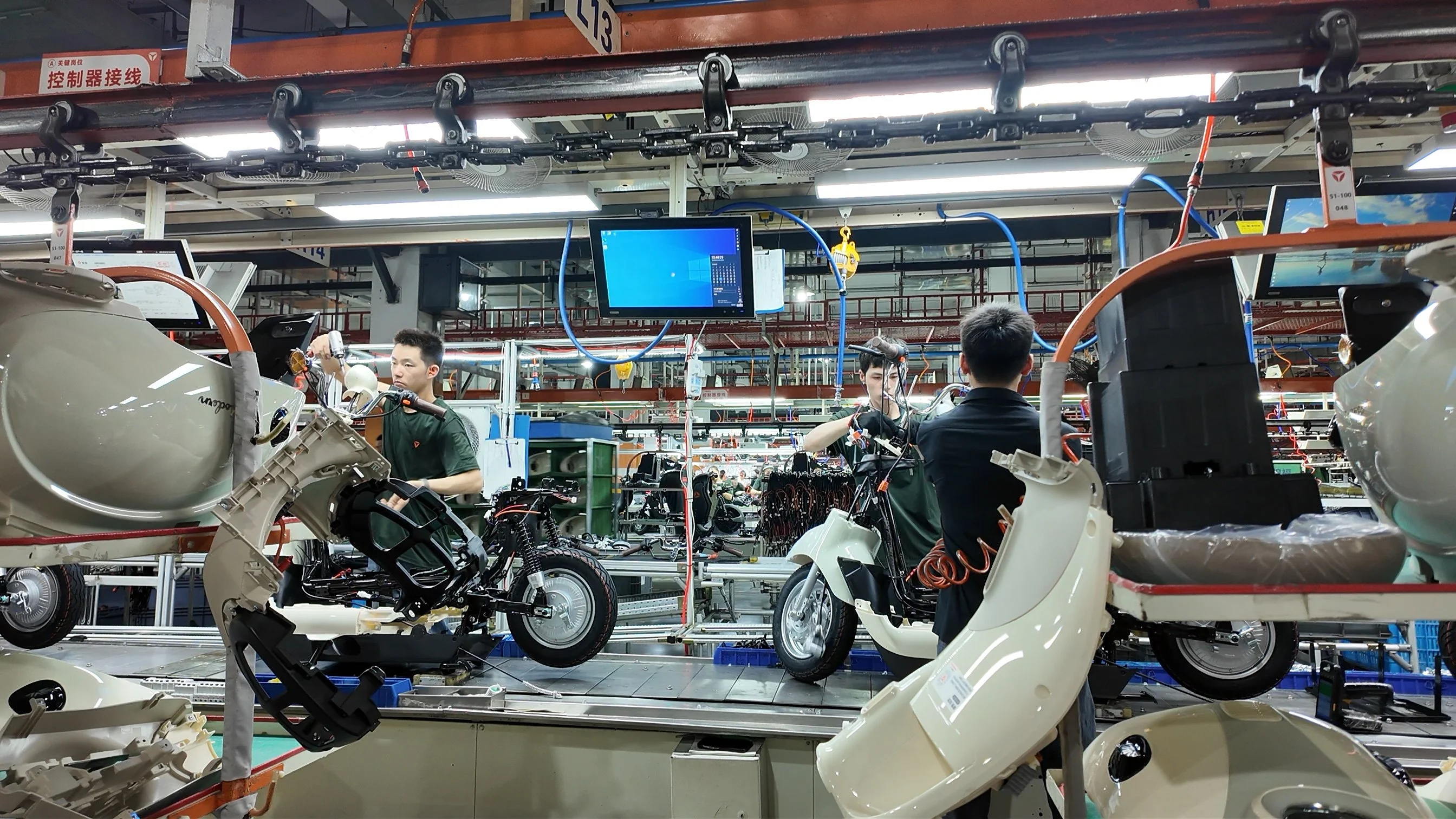Copyright scmp

Yadea – the world’s leading electric two-wheeler brand for eight consecutive years – runs a plant in its home base of Wuxi, in east China’s Jiangsu province, where a single assembly line can produce 1,300 electric bicycles and scooters a day, offering visitors a glimpse of the country’s manufacturing prowess. As of last year, Hong Kong-listed Yadea had sold over 100 million electric two-wheelers in more than 100 countries. It exemplifies how Chinese manufacturers are leveraging automation to streamline and speed up once labour-intensive assembly processes – a strategy that has enabled them to capture international markets with high-quality, competitively priced products. Those firms were the focus of a whistle-stop tour in August sponsored by the Jiangsu government, in which participants visited companies in the fields of manufacturing, robotics, healthcare, artificial intelligence and new energy that demonstrated the province’s technological advances and innovations. It reflected the manufacturing success of Jiangsu, which has a population of 85 million, a territory slightly larger than South Korea’s and a per capita gross domestic product of US$22,500 last year. Despite the rise of China’s internet economy in the past two decades, Jiangsu, one of the country’s most developed regions, has not produced tech giants on the scale of Huawei Technologies, Tencent Holdings or Alibaba Group Holding. But as Beijing declared that its innovation drive had entered “deep waters”, with easy gains behind and tougher challenges ahead, a growing number of advanced manufacturers across Jiangsu is beginning to attract more attention. The province has successfully nurtured more than 3,000 firms certified as “little giants” – small but highly specialised and innovation-driven companies active in industrial supply chains – that have enabled the nation’s technology self reliance drive. That number surpasses that of any other Chinese province. Among these little giants is Pudu Robotics, a service-robot maker with a plant in Yancheng, a northern city in Jiangsu. The factory was designed for an annual production capacity of 60,000 units, according to Liu Wen, the local deputy general manager. Liu said the supply chain in China’s manufacturing base Yangtze River Delta, offered easy access to necessary components and allowed the company – originally from south China’s Shenzhen – to “adjust suppliers” based on manufacturing needs. Along Jiangsu’s windy coastline lies the research and development centre of Goldwind Science & Technology, the world’s largest maker of wind turbines. “When we looked along China’s coastline, we chose Yancheng for its offshore wind resources and export infrastructure,” said Ning Haifeng, deputy general manager at Goldwind’s Jiangsu branch. Ning said the proximity of key suppliers for generators, blades, subsea cables and energy storage systems made it an ideal location to assemble wind power turbines. China’s top-down industrial policy, coupled with a meritocracy where local officials are evaluated based on their economic track records, creates a system in which regional governments compete to attract and support innovative projects through subsidies and other measures. While this approach has its challenges, it significantly accelerates the pace of development. Several hi-tech companies said they were courted by local authorities through various campaigns. In September, Suzhou unveiled a plan to build an “AI+ city” to foster artificial intelligence development in Jiangsu. Wuxi is recognised as a major base for China’s semiconductor industry, encompassing everything from chip design to fabrication and packaging. In addition to facilities run by SK Hynix and Infineon Technologies, Wuxi is home to China’s second-largest contract chip manufacturer, Hua Hong Semiconductor, as well as other domestic players such as Maxscend Microelectronics and CR Micro. These companies form part of an extensive regional supply chain comprising more than 600 entities in the integrated circuit sector, according to official data. The concentration of companies in Jiangsu has fostered synergies among businesses. CGXi, a collaborative robot maker, said it was working closely with the domestic electric vehicle (EV) industry. “The pace of EV development has shortened research cycles,” said CGXi marketing manager Sun Bin. This collaborative spirit has also allowed robotics firms in Jiangsu to experiment and innovate. Miracle Automation, a producer of car assembly line equipment in Jiangsu, is partnering with the likes of UBTech Robotics and Galbot to set up a factory floor where humanoid robots can be trained. Provincial and municipal investment vehicles in Jiangsu continue to invest in attracting strategic industries and innovative enterprises through initiatives that include limited partnerships, funds of funds and “patient capital” in the form of government guidance funds. These programmes aim to achieve both financial returns and strategic benefits to further develop the region’s economy. In January, Beijing issued new guidance for its vast network of government investment funds. The directive emphasised a more focused approach: “invest early, invest small, invest long-term, invest in hard tech.” The goal was not merely to achieve short-term profits, but to strengthen homegrown innovation and address “choke points” in critical supply chains. Projects in semiconductors, new energy, AI and biotechnology are particularly welcomed in Jiangsu. Addor Capital, based in Nanjing and founded in 2014, manages more than 100 billion yuan (US$14 billion) and invests in enterprises involved in semiconductors, robotics and new materials throughout the province and beyond. That strategy aligns with the vision of Addor’s chairman Ying Wenlu, who said China’s venture capital sector must “pool social capital and invest in the nation’s future”.



